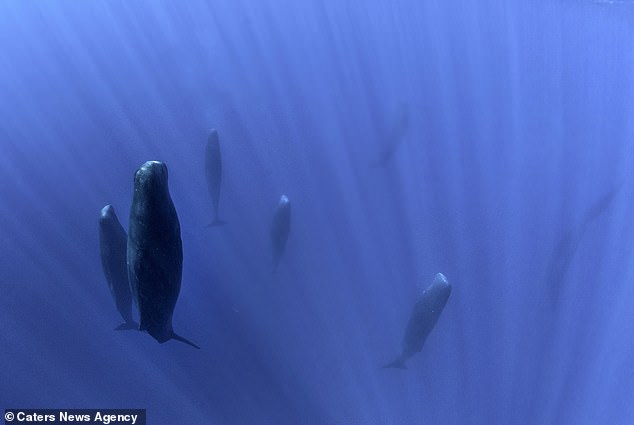Scientists have cracked the code behind a mysterious language discovered among a non-human species living in Earth’s oceans that mirrors human speech.
Using AI to study whale communication, Project CETI researchers discovered that sperm whales ‘talk’ to each other with strange, Morse code-like clicking patterns.
The mammals used patterned click sequences known as codas, which include two distinct vowel-like sounds — an ‘ah’-like a-coda and an ‘ee’-like i-coda.
The vowel-like noises were not random, as whales were seen actively controlling the pitch, length, and type of sounds they were making as they ‘pronounced’ different words.
The CETI team said whales make these sounds during social interactions in family groups, using codas to stay connected, coordinate activities, and identify each other, like an underwater social language.
The team also found that whale speech was similar to human speech because whales used their lips and air sacs as a sound source and filter, just like humans use their vocal cords and vocal tract to achieve the same results.
It marked the first time researchers have found a non-human species using vowel-like sounds and grammar-like rules in the same way humans do to communicate with each other.
Gašper Beguš, Project CETI’s linguistics lead, told Popular Science: ‘What used to be conceived of as this alien-looking Morse-code-like system just became much more human-like. We have a case of underwater vowels–in a very different world from ours, the communication system appears very similar to our speech.’

A closeup of the eye of a sperm whale. Scientists have just decoded the strange clicking noises these mammals make as they interact with each other
Scientists attached small suction-cup microphones called DTAGs to 15 sperm whales swimming in the Caribbean to record their clicks up close without distortion.
They recorded nearly 4,000 clear codas from a group of females and their offspring between 2014 and 2018, focusing only on the whale wearing the tag.
At first, the clicks sounded too slow to compare with human speech, so the team sped up the recordings until the patterns became clear and familiar.
They learned that the clicks come in these two main types of A and I vowels, just like humans use A, E, I, O, and U.
The sperm whales often used their secret language during social moments, such as greeting family members, staying in touch while diving for food, or coordinating group movements through the ocean.
The study, published on the preprint server bioRxiv and awaiting peer review, also revealed that timing was everything when it comes to whale communication.
The number of clicks, the pauses between them, and the overall speed created different rhythm types that acted almost like musical beats.
The CETI team found ‘ah’ codas are naturally longer than ‘ee’ codas in the same rhythm, and ‘ee’ codas split into short and long versions, like using length to mean something different.

AI has helped researchers discovered that sperm whales have a complex language of vowels and grammatical rules just like humans
By measuring every pause and pitch change, the scientists proved whales control timing and sound quality on purpose, not by accident, showing real communication rules.
This isn’t the first sign of complex intelligence scientists have discovered among various species of whales.
In June, researchers from the SETI Institute (Search for Extraterrestrial Intelligence) revealed that large ‘smoke ring-like’ bubbles coming from underwater were created by humpback whales, which they believed were their way of greeting nearby humans.
It was the first time scientists had seen whales sending out these unique rings while interacting with people in the wild.
Meanwhile, the songs sung by whales have been studied for decades, and in 2024, scientists finally learned that the mammals have a unique voice box that vibrates fat and muscle to produce these mysterious tones.
Normally, singing underwater would present an almost impossible problem because whales should be using up all their air.
However, a study in the journal Nature concluded that whales evolved to have a voice box that was different from most other mammals and doesn’t rely on vocal cords.
